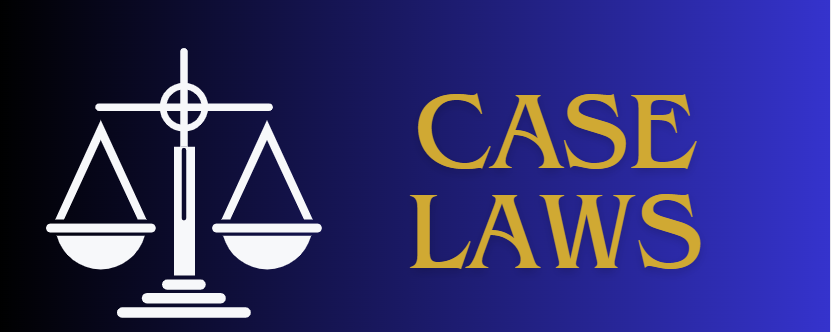W.P.No.2581/2021
Hamid Khan versusThe State & 02 others
Two FIR shave been lodged by one complainant for the offence of dishonestly issuance of cheques in terms of Section 489-FPPC, as such cheques have been used as a tool to recover the amount, although the financial transaction or dispute relating to financial matters in a business transaction are treated to be dispute of civil nature and could only be resolved through ordinary court of plenary jurisdiction. It is apparent on record that the complainant respondent No.3 has intentionally not put forward his entire claim on the basis of three post dated cheques and only utilized first cheque in F.I.R No.No.442, dated 28.09.2020, U/S 489-F PPC, P.S.Kohsar, Islamabad, such aspect reveals that the complainant has either abandoned his claim or relinquishment of part of his claim as similar to Order II Rule 2CPC,1908, which provides that the plaintiff shall include whole of the claim,which he is entitledto claim in respect of the cause of actionand where plaintiff omits to sue in respect of,or intentionally relinquishes, any portion of his claim, he shall not afterwards sue in respect of the portion so omitted or relinquished.
The above referred principles of CPC,1908 are based upon the concept of transparency, fair play, propriety and reasonableness. The object of such principle is that all matters in dispute between the same parties arising and relating to same transaction should be disposed of in the same suit. By application of similar analogy,it is obligation of the complainant to lay down the complete set of allegations with every detail to the Investigation Officer and similarly the Investigation Officeris also under obligation to find out the truth qua the allegation, its background and complete set of facts, so that he may also be able to stand beside the pros ecution before the Court of law. Such action will help the Court to reach at just conclusion for and against the accused persons on the basis of true facts a nd complete claim.
The story narrated above in two separate F.I.R allegation based on same cause of action s discloses same set of available to the complainant misused his position with malafide , who has , when he has not put forward his complete claim in terms of Section 154 Cr.P.C. neither the I.O has concluded the complete claim in the final report prepared under Section 173 Cr.P.C, despite the fact that the claim so lodged has been originated from same set of transaction.
In this regard vast powers have been extended to the incharge police station in terms of Rule 25, Chapter XXV (Investigation) of Police Rules, 1934, whereby FIR could be cancelled or even transferred from one police station to another police station or combinedly be investigated with other cases . The investigation of subsequent case be closed and FIR be disposed of being cancelled after having been found the same as false law, or dispute of civil nature or or based on mistake of fact or same set of allegation have been taken cognizance by the police authorities or by the C ourt as the case may be.
Police Rules, 1934 extend the powers to the officer incharge of the investigation to save public time, malafide and dishonesty of the complainant or in some cases it is the need of hour to consolidate different cases of same nature of same accused initiated from the same transaction to avoid any conflicting views by any two different police officers.
It is the duty of i nvestigation officer to discover incriminating evidence and to collect and establish that story of incident contained in the FIR was correct as he was not controlled or guided by the contents of FIR rather it is his own authority to search for the truth an d he may disagree with the version of FIR as it is expected from him to collect the information or to record any fresh information or facts and he may arriveatits own conclusion.
The provisions of S.233 234, 235, PPC spells out certain exceptions while dealing with the person accused of more than one offences of ali ke nature committed within a span of one year with same person or otherwise, are to be cha rged and tried jointly , this aspect if seen with the legal prism on the touchstone of joinder of charges, both the same time criminal cases have to be tried at the . In such scenario the very registration of second FIR or fresh FIR with same allegation,investigation or final report in terms of Section 173 Cr.P.C is to be treated as an extra burden on the prosecution as well as upon the judicial system and further discloses the sinister design of the complainant based upon misuse of process of law.
This Court has observed the term“same transaction”, which has beenused in Section 235 Cr.P.C., though this term has not been defined in Cr.P.C.but the same has been explained in PLD 1957 W.P (Lahore)290 (Ghulam Jilani vs.The State),ILR 42Cal957(Amritlal vs. Emperor), PLD 1950 Lahore 288(Ata Muhammad Khan Alvi and othersvs. The Crown),1971 PCr.LJ 762(Khan Mohammad and 11 othersvs. The State),1997 PCr.LJ1900 [Quetta](Muhammad Azam vs.State),following principles have been settled:-
i.The question whether certain acts or series of acts constitute same transaction is in each case a question of fact and no comprehensive formula of universal application can be laid down. To ascertain whether such acts are parts of the same transaction it would be essential to see whether they are linked together to present a continuous whole.
ii.The real and substantial test for determining whether several offences are connected together so as to form one transaction depends upon whether they are so related to one another in point of purpose, or as cause and effect or as principal and subsidiary acts, as to constituteone continuous whole.
iii.It seems, therefore, that the main test really be continuity of action.
iv.The following up of some initial act through all its consequences and incidents until the series of acts or group of connected acts comes to an end, either by attainment of the object or by being put an end to or abandoned. If any of those things happens the whole process is begun over again,it is not the same transaction but a new one, in spite of the fact that the same general purpose may continue.
v.There must be one continuous thread of common purpose running through the acts to support a joinder of charges in respect thereof.
vi.To ascertain whether a series of acts would form part of the same transaction the most important point to be considered is whether there was a common purpose and design and continuity of action.
vii.The circumstances which must bear on the determination of the question in each individual case whether certain acts constitute a single transaction are proximity of time, unity or proximity of place,continuity of action, community of purpose of design.
viii.An analysis of these cases would show that the offences, the question of whose being parts of the same transaction was involvedin them,wore related to each other by a casual connection, and such connection seems to be absolutely necessary if two offences are to be treated as having been committed in the course of the same transaction.
ix.The real and substantial test, then, for determining whether several offences are connected together so as to form the same transaction,depends upon whether they are so related to one another in point of purpose, or as cause and effect, or as principal and subsidiary acts, soto constitute one continuous offence and another does not by itself necessarily import want of continuity, though the length of the interval may be an important element in determining the question of connection, between the two.
Similarly, Part-6, Chapter XVof Cr.P.C.deals with the proceedings in the prosecution, whereby Section 179Cr.P.C.is another example where acts of same transaction jointly constitute the same offence and that offence can be inquiredinto and tried within the limits of the Court under whose jurisdiction the act wasdone and ensued. The legislature has minimized the ambiguity in same set of cases arising out of the same transaction even in two districts to be inquired andtried at the same place by extending thepowers in terms of Section 185 Cr.P.C.to the High Court.
Now dealing with the peculiar situation as role of the I.O in such type of cases as well asof the trial court in the earlier FIR is to be treated in the following manner:-
i.SecondFIR could not be registered in cases of same transaction like cheques of same series originating on same cause of action, whether dishonoured or not or subsequently dishonored after the registration of first FIR.
ii.If second FIR has been lodged,the same should be cancelled by referring subsequent cheques through supplementary challan in the first FIR/case.
iii.If second FIR has not been registered and matter is pending before the Ex-Officio Justice of Peace, whois dealing with the case, he may pass an order/directionU/S 22-A(vi) Cr.P.C. to the I.O of the first case who has already registered the FIR or has submitted the final report Cr.P.C. under Section 173 to file supplementary challan in that first case on the basis of these new facts of cognizable offence from the same incident/transaction emanating like dishonoured cheque in terms of Section 489F PPC on the basis that I.O of the first FIR is negligent and has not performed his duties qua the investigation of the case to unearth every information as required under the l aw.
iv . If the police officer has also registered the second FIR, he may convert the final report in terms of Section 173 Cr.P.C. , as supplementary report of the first FIR while considering the offence of same transaction and shall submit supplementary challan in the same court without recourse to arrest of accused as held in Sughran Bibi case supra .
v .In case where other different dishonoured cheques were still with the complainant , which were not used against the same accused person originating from the same series of the cheques , transaction and which are the basis of first FIR , in such situation no further FIR could be registered and police officer shall not proceed in those cases , parties rather refer the to Court of competent jurisdiction under the law by way of filing of civil suit for recovery.
vi . Officer incharge of police station shall not entertain the every such application of subsequent dishonor cheque of same accused by facilitating the complainant as helping in or becoming tool of recovery, if such ac tivity has been noted, SP (Investigation) or SSP or SDPO shall take notice of these issues and pass appropriate directions to the officials concerned.
vii.Any such issues if come into the notice of senior police officers that any complainant is intended to get registered second, third or fourth FIR on same series of cheques, the senior police officers are duty bound to refer the parties to the court of competent jurisdiction or may direct the matter to the concerned police station for recording of the entire complaint in police diary with reasons that already FIR hasb een lodged and the complainant has not disclosed other cheques of same transaction due to his ill-will and malafide, then refer the parties to the competent court.
viii.In cases arising out from same transaction,the trial court of the first FIR shall also pass speaking order in terms of Sections 233, 234, 235, 239 Cr.P.C. while considering subsequent cheques being joinder of charges as they were based upon same transactions.






















0 Comments